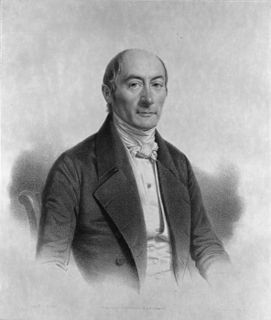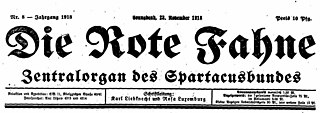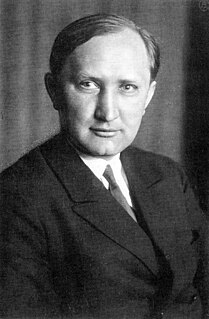
Elisabeth Friederike Rotten (15 February 1882, Berlin - 2 May 1964) was a Quaker peace activist and educational progressive.

Elisabeth Friederike Rotten (15 February 1882, Berlin - 2 May 1964) was a Quaker peace activist and educational progressive.
As daughter to the Swiss couple Moritz and Luise Rotten, she attended the "höhere Mädchenschule Luisenschule" during 1888-1898, later studying at the Victoria-Lyzeum Berlin from 1904. In September 1906 she took the Reifeprüfung at the Kaiserin Augusta-Gymnasium Charlottenburg. She graduated in her studies in philosophy and German language and literature in Heidelberg, Berlin, Marburg and Montpellier. In Marburg she met with Hermann Lietz and Gustav Wyneken, which was vital to the future development of her thinking. In 1913 she published her PhD thesis under the title "Goethes Urphänomen und die platonische Idee" (Goethe's "Urphänomen" and the Platonic ideal) in Marburg.
In 1913 she began lecturing at the University of Cambridge on German literature. In 1914 she returned to Berlin and worked in the "Auskunfts- und Hilfsstelle für Deutsche im Ausland und Ausländer in Deutschland" with professor Friedrich Siegmund-Schultze. In the same year she co-founded the "Bund Neues Vaterland", later the "German League for Human Rights". In 1915 she travelled as a representative to the 1st International Women's Congress in The Hague and worked for the foundation of the "Internationalen Frauenliga für Frieden und Freiheit" (International Women's League for Peace and Freedom").
In 1922, together with Beatrice Ensor and Adolphe Ferrière she founded the New Education Fellowship becoming its vice-chair for German-speaking countries and editor, of its German language journal which eventually came to be called Das Werdende Zeitalter. [1] From 1922 she was associated with the school farm, Schulfarm Insel Scharfenberg, begun by Wilhelm Blume in Berlin and was a frequent visitor to the Odenwaldschule founded in 1910 by the educational reformer Paul Geheeb.
In 1925, Rotten and Adolphe Ferrière became the first Deputy Directors of the International Bureau of Education (IBE), where they provided support to Director Pierre Bovet. [2]
She was also a friend of the anarchist, Gustav Landauer, who was Minister of Culture in the short-lived Munich Soviet (or “Council Republic”) of 1919 before being murdered after it was violently suppressed. From 1926 until 1932, Rotten shared the editorship of the journal Das Werdende Zeitalter with Karl Wilker, an exponent of social pedagogy who transformed the Lindenhof in Berlin. The title of this journal was inspired by that given to a collection of essays by Landauer, which his friend, the philosopher Martin Buber, published in 1921. In 1930, Rotten co-founded a school at Hellerau just outside Dresden, where a garden city was established shortly after 1900 as part of a reform movement advocating modern housing. [3]
Otto Kaiser was a German Old Testament scholar.

Georg Friedrich Puchta was an important German Legal scholar.
Mascha Kaléko was a German-language poet.
Richard Ehrenberg was a German economist.

Die Rote Fahne was a German newspaper originally founded in 1876 by Socialist Worker's party leader Wilhelm Hasselmann, and which has been since published on and off, at times underground, by German Socialists and Communists. Karl Liebknecht and Rosa Luxemburg famously published it in 1918 as organ of the Spartacus League.

Beatrice Ensor was an English theosophical educationist, pedagogue, co-founder of the New Education Fellowship and editor of the journal Education for the New Era.
Eigil was the fourth abbot of Fulda. He was the nephew and biographer of the abbey's founder and first abbot Saint Sturm. We know about Eigil primarily from the Latin Life that the monk and teacher of Fulda, Candidus Bruun composed about him after his death.

Claudia Schmölders, also Claudia Henn-Schmölders is a cultural scholar, author, and translator.

Emil Bock was a German anthroposophist, author, theologian and one of the founders of The Christian Community.
Kurt Löwenstein was a German USPD/SPD politician, socialist reform pedagogue and one of the founders of Socialist Youth of Germany - Falcons.

Rudolf Pannwitz was a German writer, poet and philosopher. His thought combined nature philosophy, Nietzsche, an opposition to nihilism and pan-European internationalism:
Pannwitz's elusive, difficult goal may be seen as the complete re-evaluation of man, art, science and culture envisaged as the expression of an evolving cosmos obeying the laws of eternal recurrence, with Nietzsche-Zarathustra as the supreme prophet.

Elisabeth Cruciger, a German writer, was the first female poet and hymnwriter of the Protestant Reformation and a friend of Martin Luther.

Dietmar Otto Ernst Rothermund was a German historian and professor of the history of South Asia at the Ruprecht-Karls University in Heidelberg. On an international level, he was considered an important representative of German historical scholarship. Although he began his academic career as an Americanist, he succeeded in establishing a special status for himself in the German historiography of South Asia. Thus, his concern was always to lay the foundation for South Asian Studies in Germany and Europe. The bond Rothermund had with India was not only of a professional nature, but also of a private one. His wife Chitra née Apte, with whom he had three children, was from Pune, Maharashtra, India.

Schloss Weimar is a Schloss (palace) in Weimar, Thuringia, Germany. It is now called Stadtschloss to distinguish it from other palaces in and around Weimar. It was the residence of the dukes of Saxe-Weimar and Eisenach, and has also been called Residenzschloss. Names in English include Palace at Weimar, Grand Ducal Palace, City Palace and City Castle. The building is located at the north end of the town's park along the Ilm river, Park an der Ilm. It forms part of the World Heritage Site "Classical Weimar".
Karl Kehrbach was a German pedagogue best known as editor of the multi-volume Monumenta Germaniae Paedagogica.

Ilse Reicke was a German writer, journalist and feminist.

Heinrich Scheel was a German left-wing historian and longtime vice president of the East German Academy of Sciences and professor of modern history at Humboldt University of Berlin. Scheel was notable for putting forward a theory of the German radical at the time of the French revolution, in an attempt to determine an alternative tradition in Germany. Scheel was most notable for being a German resistance fighter against the Nazi regime, during World War II. He was a member of a Berlin based anti-fascist resistance group that was later called the Red Orchestra by the Abwehr, during the Nazi regime.
Gerhard Menk was a German historian and archivist.
Helmut Neuhaus is a German historian who specialises on the Early modern period. From 1989 to 2009 he held the Chair of Modern History I at the University of Erlangen–Nuremberg.

Friedrich Uhlhorn was an honorary professor at the Philipps-Universität Marburg, whose scientific focus was on the history of the State of Hesse and was also known for his work outside Hesse. His special scientific interest was mainly focused on the problems of historical cartography. In collaboration with Edmund Ernst Stengel, he published the Geschichtlichen Atlas von Hessen, which is considered his major work. He also wrote the article Die deutschen Territorien. A: The West, which deals with the West German regional history. Likewise he was responsible as editor for the Hessisches Jahrbuch für Landesgeschichte by Bruno Gebhardt.